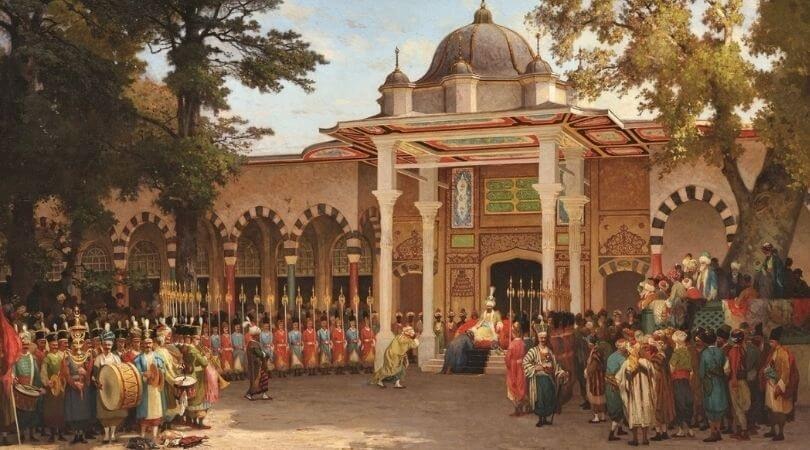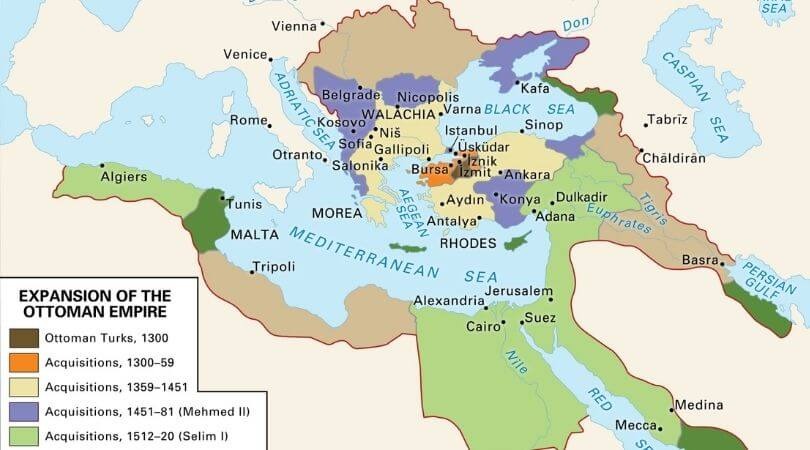The Rise and Fall of the Ottoman Empire
Every rise has struggles, and every fall has reasons which are often masked by the consequences of these events. The sun of the Ottoman Empire—one of the greatest empires in history—rose and shone for a long time, but like any other dynasty, the fall was dark and constant.
The Ottoman Empire was founded in 1299 and grew from Turkish tribes in Anatolia. The Ottomans enjoyed a fair play of power during the 15th and 16th centuries and reigned for more than 600 years. It is regarded as one of the longest-lasting dynasties in the history of ruling empires. The power of the Ottomans was generally seen as the power of Islam. It was considered a threat by the Western Europeans. The rule of the Ottoman Empire is regarded as an era of regional stability, security, and advancements. The success of this dynasty is attributed to the fact that they adapted to the changing circumstances, paving the way for cultural, social, religious, economic, and technological development.
The Ottoman Empire History
The Ottoman Empire grew to include various areas of present-day Europe. It stretched over Turkey, Egypt, Syria, Romania, Macedonia, Hungary, Israel, Jordan, Lebanon, parts of the Arabian Peninsula, and parts of North Africa during its peak. The total area of the empire covered about 7.6 million square miles in 1595. While it was crumbling, a part of it became present-day Turkey.

The Origin of the Ottoman Empire
The Ottoman realm itself appeared as a broken thread of the Seljuk Turk Empire. The Seljuk Empire was raided by Turk warriors under Osman I in the 13th century who took advantage of the Mongol invasions. The Mongol invasions had weakened the Seljuk state, and the integrity of Islam was in danger. After the collapse of the Seljuk Empire, the Ottoman Turks gained power. They took control of the other states of the Seljuk Empire, and gradually, by the 14th century, all different Turkish reigns were predominantly ruled by Ottoman Turks.
The Rise of the Ottoman Empire
The rise of every dynasty is more of a gradual than an abrupt process. The Turkish Empire owes its success to the outstanding leadership of Osman I, Orhan, Murad I, and Bayezid I, to its centralized structure, good governance, ever-expanding territory, control of trade routes, and organized, fearless military might. The control of trade routes opened doors for great wealth, which played a significant role in the stability and anchorage of the rule.
The Period of Great Expansion
More clearly, the Ottoman Empire reached its pinnacle with the conquest of Constantinople—the capital of the Byzantine Empire. Constantinople, which was considered unconquerable, was brought to its knees by Osman's descendants. This conquest became the foundation for further expansion of the empire, including over ten different states of Europe and the Middle East. The literature on Ottoman Empire history calls this era the period of great expansion. Many historians attribute this expansion to the disorganized and dwindling state of the occupied territories and the Ottomans' advanced and organized military might. The expansion continued with the defeat of the Mamluks in Egypt and Syria. Algiers, Hungary, and parts of Greece also came under the umbrella of Ottoman Turks in the 15th century.
It is evident from the pieces of Ottoman Empire history that, despite being a dynasty, the position of only the supreme ruler or sultan was hereditary; all others, even the elite, had to earn their positions. In 1520 the reign was in the hands of Suleiman I. During his reign, the Ottoman Empire gained more power, and a strict judicial system was recognized. The culture of this civilization began to flourish.

The Decline of the Ottoman Empire
The death of Sultan Suleiman I marked the beginning of an era that led to the decline of the Ottoman dynasty. The critical reason for the decline surfaced to be consecutive military defeats—the most predominant being the defeat in the Battle of Lepanto. The Russo-Turkish wars led to the deterioration of military might. Following the wars, the empire had to sign several treaties, and the empire lost much of its economic independence. The Crimean War created further complications.
Till the 18th century, the central hub of the empire had grown weak, and various rebellious acts led to the continuous loss of territories. With political intrigue in the sultanate, strengthening European powers, and economic competition as new trades were developed, the Turkish Empire reached an exhaustive stage and was referred to as the "Sick Man of Europe". It was so-called because it had lost all its remarkability, was economically unstable, and was increasingly dependent on Europe. The end of World War I marked the end of the Ottoman Empire too. Turkish nationalists abolished the sultanate, signing the Treaty of Sevres.
The Final Word
Every rise has a fall, but the Ottomans ruled for an era of 600 years, and it took a World War to put an end to it. The Ottoman Turks are still remembered for their valor, cultural development and diversity, innovative ventures, religious tolerance, and architectural wonders. The policies and political infrastructures developed by the late Turks are still in function, however in improved or altered forms.